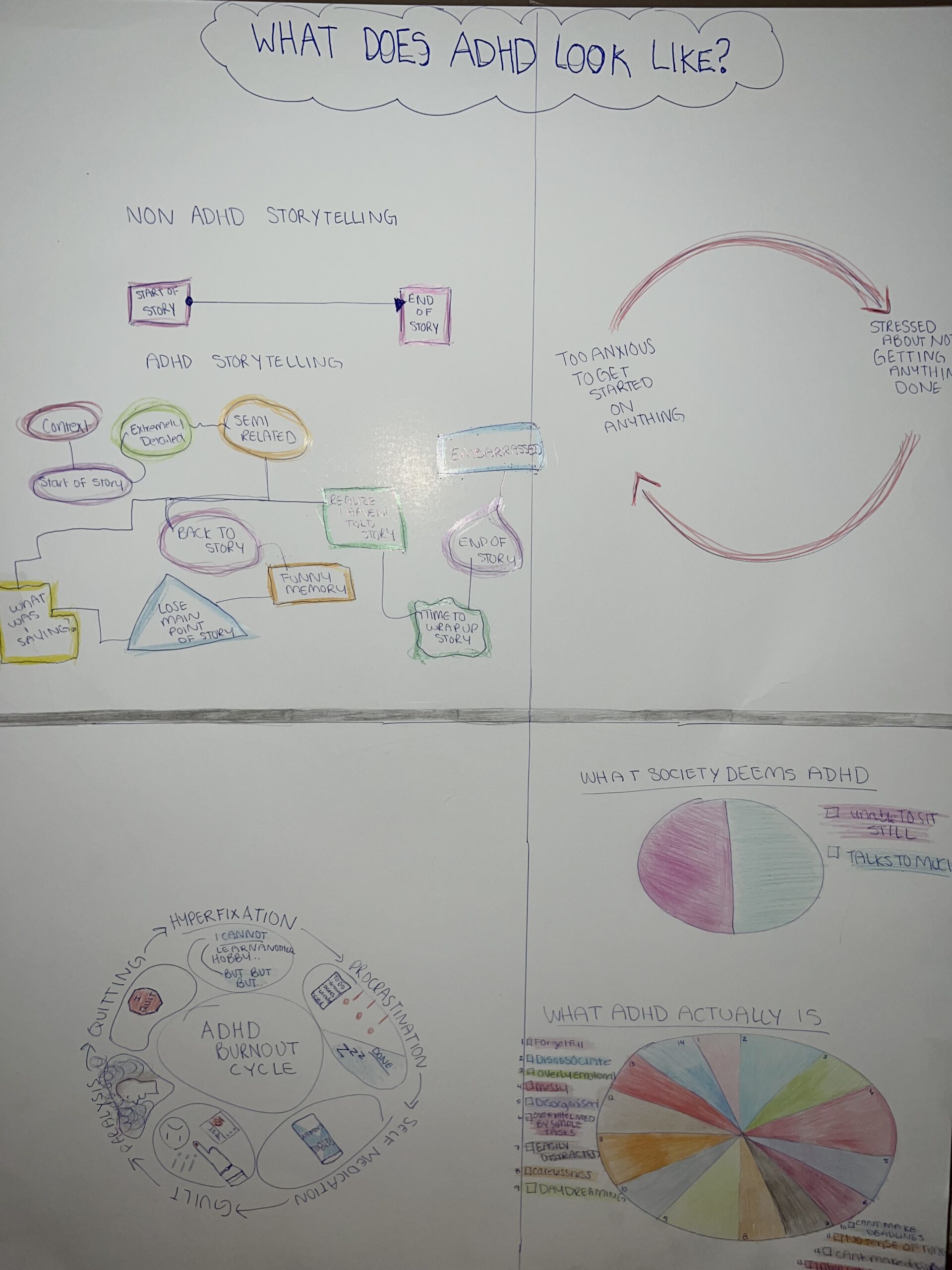Haleah Schmidt
Steam Project F11

I chose to do my research project on the nervous system; more specifically the frontal lobe. I dove into the nervous system focusing in on the pre frontal cortex (the front part of the frontal lobe). The pre frontal cortex is connected to symptoms such as impulsivity, time management, distraction and disorganization (All signs of ADHD) My objective will be Unit 6 to identify the four main structures of the brain and their functions.

This project delves into the four main structures of the brain and their functions. It focuses on the effect that attention deficit hyperactivity disorder(ADHD) has on these structures and functions. The four lobes of the brain include the frontal lobe, parietal lobe, occipital lobe, and temporal lobe. The frontal lobe processes higher cognitive functions such as decision-making, personality, and expression. The parietal lobe processes sensory perception and proprioception. The occipital lobe handles visual processing. The temporal lobe handles senses such as speech, hearing, and some visual processing as well as long-term memory. ADHD is characterized by a weaker functioning and structure of the frontal cortex as well as deficits and imbalances in certain neurotransmitters such as norepinephrine and dopamine. One difference between neurotypical brains and ADHD brains is the concentration and orientation of neurons. This especially affects the frontal lobe. ADHD can cause a serious toll on the mental health and learning of the affected individual. The visual describes the dichotomy of indecision that ADHD can cause. It shows how it can create anxiety to start something but also anxiety that nothing is getting done. It shows inconsistencies in thought pattern and train. It describes the multitude of mental states that the indecision creates. ADHD is a variable condition that affects people in a variety of ways but affects a significant portion of the population.
In her project Haleah studied the nervous system, or more specifically a part of the frontal lobe called the pre frontal cortex. This is because this region of the brain is responsible for controlling functions that are associated with ADHD. These functions include but are not limited to impulsivity control, time management, distraction, and disorganization. She created a drawing displaying how people that have ADHD act/think. Her piece also points out a misconception most people hold concerning individuals with ADHD. The main objective That Haleah addressed in her project was the understanding the four regions of the brain.